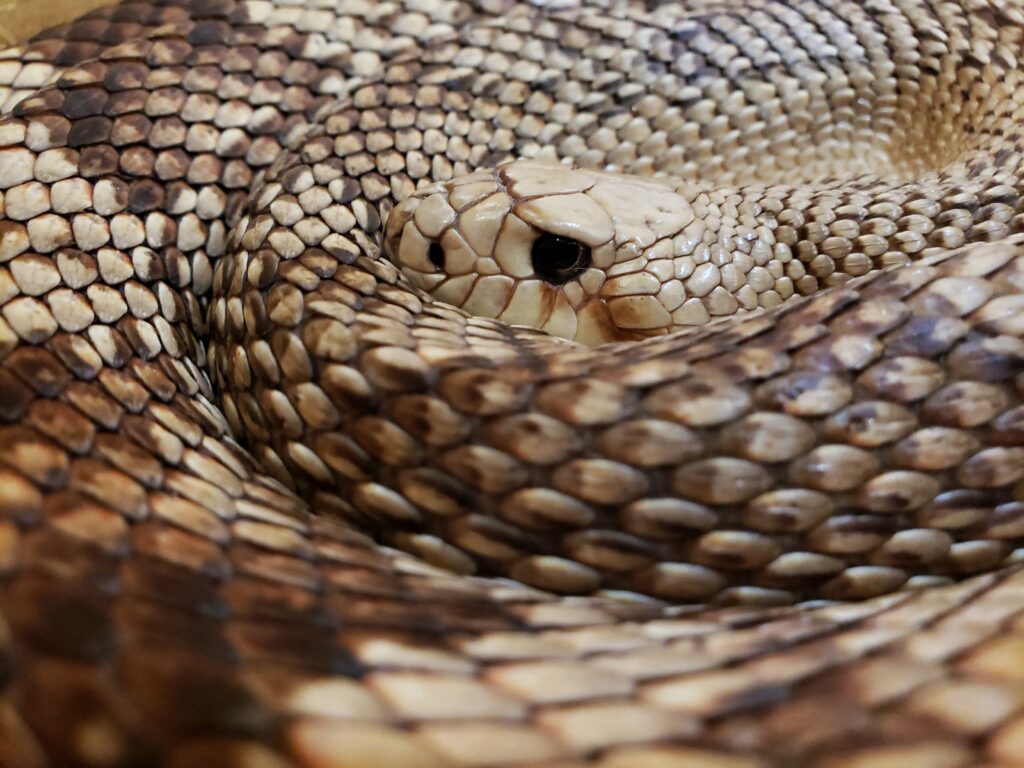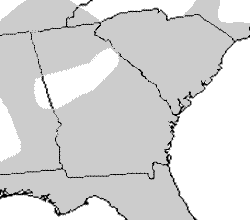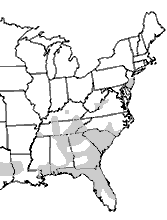Pine Snake (Pituophis melanoleucus)



Photos by Amanda Hurst unless otherwise noted
| Description: Pine snakes are large, fairly heavy-bodied snakes that average 48-66 inches (122-168 cm). The ground color of pine snakes may be white, yellow, or light gray. There are usually dark, squarish, blotches on the sides and back that are lighter toward the tail and darker near the head. The belly is white with dark spots on the sides. Pine snakes also have a relatively small head compared to other large colubrids and have a snout that is somewhat pointed . They have four prefrontal scales, unlike most other colubrids, which have two. There are two subspecies of pine snakes that occur in Georgia and South Carolina, the northern pine snake (Pituophis melanoleucus melanoleucus) and the Florida pine snake (Pituophis melanoleucus mugitus). The pattern on Florida pine snakes is never as defined and sharp as it is in northern pine snakes, and they are generally browner in coloration. Also, the bellies of Florida pine snakes are uniformly ashy gray with no spots. Male snakes can be distinguished from females by the appearance of the tail. Males will have a longer tail that does not taper as quickly as the female tail.
Range and Habitat: Pine snakes are found across the Southeast, but their range is patchy. They are found throughout the Coastal Plain of North Carolina, South Carolina, Georgia, and throughout Florida , and in disjunct populations in the dry mountains of Virginia , Tennessee , and northern Georgia . A large, but isolated population occurs in the Pine Barrens of southern New Jersey . Coastal Plain snakes prefer flat and dry habitats with open canopies and are most common in sand hill and sandy pine barren habitats. This species is also found quite often in stands of longleaf pine or turkey oak forest . Occasionally individuals are seen in abandoned fields and dry mountain ridges. They are often associated with pocket gophers and gopher tortoises. Infertile, sandy soils are important habitat for pine snakes because they dig both hibernacula and summer dens. Habits: These snakes are excellent burrowers, spending the majority of their time underground. Their occasional surface activity can be observed in the spring through the fall, particularly May to October. Pine snakes are oviparous and lay their eggs in June through August. They are known to build communal nests, with several females laying eggs in one spot. The eggs are some of the largest of any US snake and hatchlings hatch out at over 12 in (30.5 cm) in length. When pine snakes are first approached they tend to hiss very loudly, vibrate their tails, and strike. Conservation Status: Pine snakes have no federal protection, but several states have them listed as threatened, with a few having laws protecting them. This species has been decreasing rapidly in its northeastern range and is believed to have been extirpated from West Virginia and Maryland. It is also at a high risk of being extirpated from the New Jersey pinelands. In Georgia, pine snakes are listed as threatened and have a state conservation rank of S3 (rare to uncommon). They are protected throughout the state of Georgia. Some forestry ecologists consider fire exclusion and associated habitat degradation to be a cause of decline for the pine snake in eastern parts of its range. Account Author: Benjamin Morrison, University of Georgia – edited by J.D. Willson |
